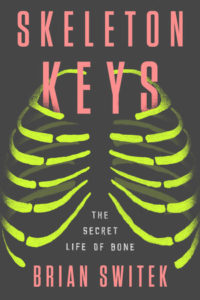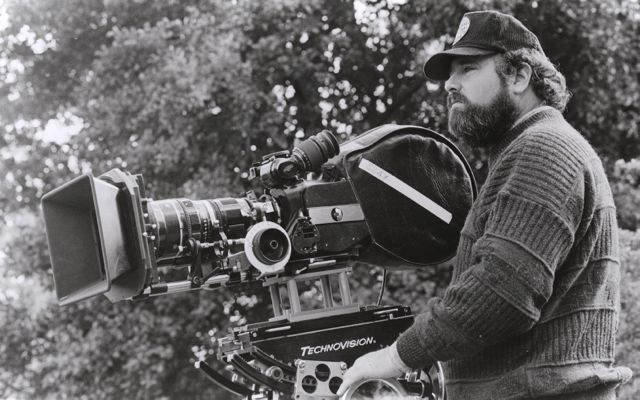Bone responds to the world just as other parts of our bodies do. When you cut your finger on a piece of paper, you expect your platelets to plug up the exposed blood vessels and that your skin will eventually knit itself back together. Our bones can do much the same. When you break a bone, your body immediately begins a repair process to bring those two pieces back into accord. The way our bones grow and maintain themselves has provided us with a built‑in repair system.
But sometimes bones don’t behave as they ought to. Sometimes the elements that are supposed to be our internal supports become a kind of prison for the rest of our tissues, bending our bodies to the new course they’ve set. They are potent, if painful, reminders that skeletons tell the stories of our lives more powerfully than anything else.
Despite our intimacy with our own bones—there’s a skeleton inside you right now—it’s all too easy to look at bones as objects. Anthropologists and anatomists might be able to look at this or that skull or other skeletal piece and say something about how old that person was or divine other clues from the osteological landmarks, but in broad strokes, bones taken out of their fleshy context can seem stripped of their stories. Except in the case of pathology.
Pathology is the study of the biologically unexpected. Most often it’s concerned with disease and injury, but other alterations—such as the effects of corseting or skull reshaping—also fall under its purview, regardless of whether there were any detrimental effects to the person. In short, pathology compares bones to an idealized version of the complete human skeleton and notes anything that’s different from that standard, with each of those anatomical departures also being called a pathology.
Pathologies are clues of a life lived, of bones broken and diseases suffered. We might not be able to get at the direct reasons for those injuries in every case, but they are nevertheless potent reminders that an individual was alive and still has stories to share. The bulge of bone on a healing rib or the faintest trace of a hairline crack on a piece of femur connects us with the dead more than a pristine skull does. Pathologies are touchstones that bring us closer to the life we’re considering, raising questions that might never occur to us if the skeleton were in pristine condition.
Entire books could be filled with examples of pathological bones and skeletons. In fact, several have, and almost any human skeleton is going to show some sign of injury. No skeleton lacks signs of wear, even if it’s just a tiny toe fracture you didn’t know you had or a cavity that went unfilled. That’s what allows pathology to connect us to people we’ll never meet. The various imperfections our skeletons display are stories from our lives, privileged or long-suffering as they might be.
But while pathology may have principally been invented as a science by humans, for humans, it doesn’t only apply to us. We’re not the only creatures with skeletons, after all, and the way bone grows, breaks, and heals applies to other vertebrates as much as ourselves. In fact, the fossil record provides ample evidence that many of the osteological injuries we suffer aren’t new at all. The list of bumps and breaks goes back millions and millions of years, each one adding a little more nuance to the stories of the creatures that capture our imagination in museum halls. In fact, sometimes the strange skeletons of ancient mammals and giant dinosaurs are so impressive that we miss these clues—tangible evidence of unique lives long lost.
One of my favorite examples stands in an alcove on the fourth floor of the American Museum of Natural History. It’s usually quiet up there. The Milstein Hall of Advanced Mammals doesn’t attract nearly the same crowds as the neighboring galleries of dinosaurs. But that’s part of why the old Megacerops is always on my list when I stop by the museum. The skeleton of this beast—what looks like a towering rhino but belongs to an extinct, distantly related group of mammals called brontotheres—is ghostly white, the mineralization process that took place after its death some 34 million years ago giving it a pale shade approximating the colors of its living skeleton. It’s beautiful. And if you look closely, the fifth rib on the right side looks a bit gnarly compared to its neighbors. About halfway down is a break surrounded by bulbous growths of bone from when the mammal healed. What exactly happened, no one can say.
Maybe this Megacerops had a bad fall. Perhaps a rival slammed into its side and shattered the bone, just like quarreling bison do today. The information held in the skeleton doesn’t go that far. But the ancient injury nevertheless records a painful moment in this individual’s life and shows us that the animal survived it. The rib broke and was in the process of healing when something else killed the animal. And this small monument to prehistoric pain makes the old bones feel a little more intimate, easier to wrap up in imaginary flesh as we envision the reanimated bones stepping off their museum podium.
The various imperfections our skeletons display are stories from our lives, privileged or long-suffering as they might be.
Of course, there’s more to the skeleton than bones. Teeth present their own problems, too, with familiar dental ailments stretching surprisingly far into the past. Consider little Labidosaurus. This 275 million-year-old reptile looked like a medium-size lizard with a snaggletoothed overbite, and one particular specimen found in Baylor County, Texas, records the oldest known evidence of bacterial infection in a land-dwelling vertebrate. For some reason, perhaps biting off more than it could chew, the reptile broke off two of its teeth. Normally this wouldn’t present much of a problem. These reptiles grew new replacement teeth throughout their lives. But in this case, bone covered the damaged tooth roots and trapped bacteria inside the jaw. The reptile suffered a severe bone infection, losing three more teeth and suffering an inflamed, painful injury that oozed pus. The degree to which its jaws were altered tells us that the reptile survived with this injury for a while, but every bite of each meal would have been excruciating.
And did you know that dinosaurs got arthritis? Many of us unfortunately become familiar with this generalized form of joint pain as we age, but fossil evidence shows that even the “terrible lizards” coped with aches that are familiar to us today. The way bone reacts to the loss of surrounding tissue tells the tale. While there are many, many different forms of arthritis, it generally manifests itself when the cushioning cartilage of a joint is worn or eaten away and bones now touch each other, new bone growth taking on gnarly shapes at the site of contact. It’s one of the prices we pay for living to old age, but there are other ways it can happen.
Sometimes an open wound might provide bacteria with a direct route to a skeletal joint, the microorganisms eroding the cartilage and generating pus as they make themselves comfortable, and one of the grossest examples comes from a pair of lower limb bones from a shovel-beaked dinosaur found in the sandy, 66 million-year-old marl of New Jersey. The two bones, found fused together, were said by paleontologist Jennifer Anné and colleagues to have a “cauliflower-like appearance” toward the end where the two bones met at the elbow; the paleontologists describing the fossil called it “a mess of ‘frothy’ bone.” This dinosaur’s bone tissue was dying, the limbs rapidly growing new bone to try to make up for it, manifesting as septic arthritis that had eroded away the cushioning cartilage at the joint. In other words, this hurt, and the degree of bone growth shows that the dinosaur had lived with this problem for a long time before it eventually perished at the close of the Cretaceous.
Part of the reason we’re able to recognize these problems in fossil creatures is because we know them in ourselves. It’s the uniformitarianism of pathology. Our skeletons react much the same way to the same insults and diseases that vertebrates have had to deal with since the origin of bone. Having a hardened, internal skeleton has its drawbacks, and pathologies throughout history show us the natural risks that come built‑in with bone. It’s worth stopping to consider these various changes because they are unexpected expressions of what our skeletons can do, what they endure, and how they can repair themselves.
Pathologies also provide us greater insight into what our close hominin relatives and ancestors were doing throughout prehistory. While tooth cavities were once thought to be a relatively modern problem, associated with the invention of agriculture and greater reliance on starchy foods, a roughly 15 thousand-year-old archaeological site in Morocco has revealed that the hunter- gatherers buried there had really terrible teeth that were pocked with holes. About half of the adult skeletons found buried there had cavities. Acorns and pine nuts found at the same site likely explain why. These people loved their botanical sweets, and so their teeth look pretty similar to those of modern-day soda fiends. And, knowing what these cavities do to us, the researchers who described the discovery concluded that these hunter-gatherers “would have suffered from frequent toothache and bad breath,” particularly since they lived about a thousand years before our species’ earliest attempts at dentistry.
But it’s not just bad habits that have become fossilized. The pathology of the human fossil record also suggests that we’ve been caring for each other for a very long time. KNM‑ER 1808 is a celebrity skull among paleoanthropologists, a 1.7 million-year-old Homo erectus skeleton found in Koobi Fora, Kenya. But something was wrong with this person. The bones, identified as osteologically female, were not what researchers expected for a typical Homo erectus. Lesions marked her skull and jaws, and there were signs that her periosteum—that membrane that wraps around living bone—reacted terribly to some kind of pathology, her bones themselves showing signs of bleeding before death. These clues led researchers to suggest that she suffered from hypervitaminosis A. As you might guess from the name, it’s a condition that arises from ingesting way too much vitamin A from sources such as fish or, as anthropologists suspected, the liver of a carnivore like a lion or hyena (although a second opinion suggests that eating bee broods could cause a similar vitamin A spike). Regardless of the immediate cause, this person was clearly ill for a long time—long enough for painful pathologies to accumulate across her skeleton—and she likely would not have survived as long without the help and care of others. Rather than being the brutish louts they’re so often characterized as, early humans recognized illness and helped keep each other alive.
Having a hardened, internal skeleton has its drawbacks, and pathologies throughout history show us the natural risks that come built‑in with bone.
This is the history we’ve inherited—skeletons that record not only our evolutionary history and individual biology but also the way we lived and the pains we suffered. Osteopathology covers afflictions including bacterial infection, arthritis, and syphilis, certainly, but even something as common as a cavity or a minor fracture falls under the purview of the field. I have one such example myself. When I was ten, I borrowed an old, narrow skateboard from my grandparents’ house. I was having a great time rolling down the hill of my family’s driveway, seated, until my mother suggested that I try standing up on it. I promptly fell off and jammed my hand onto the ground hard enough that I got a greenstick fracture, a crack in the bone that didn’t go all the way through, on my radius. I have a lot of memories from that summer of floating in the pool, cast-covered arm wrapped in a garbage bag.
Thankfully the same processes that grow and maintain my bones eventually knitted the break together and likely obliterated all evidence that it was ever there, but I still have the X‑ray to remind me of my minor misadventure. But it could have been worse. If I’d suffered a complete fracture—the bone actually snapping into two or more pieces—then the healing process would have taken far longer and required that the broken pieces be watched more closely to make sure they rejoined in the right way. And without medical attention, such breaks don’t always knit back together neatly. Bone will still attempt to bridge complete breaks, bringing the ends back together, but they might be out of alignment, connected by messy growths of bone that alter mobility. In some extreme cases, the bones try to reach out to each other with new tissue but never actually meet, creating a false joint called pseudarthrosis. It’s difficult not to cringe when looking at such injuries, but all the same, they speak to how versatile and even accommodating our skeletons are.
As we’ve seen from our prehistoric friends, though, breaks and obvious signs of trauma aren’t the only starting points for pathology. Disease, nutrition, and other external causes have their role to play, too. If you go too long without sufficient vitamin C, for example, your bone tissue will start to thin and be more likely to break. That’s one of the many terrible signs of scurvy and why it’s wise to squeeze some lime in your rum. Likewise, persistent vitamin D deficiency prevents the osteoid of bones from properly mineralizing, so bones wind up being more pliable than they should be. That’s why children who suffer from rickets often have legs that bow inward or outward. These are but two of the many ways what we encounter in life can alter who we are inside.
__________________________________

Adapted from Skeleton Keys by Brian Switek, to be published on March 5, 2019 by Riverhead, an imprint of Penguin Publishing Group, a division of Penguin Random House LLC. Copyright (c) 2019 by Brian Switek.
Brian Switek
Brian Switek is the author of the books My Beloved Brontosaurus and Written in Stone, as well as the Scientific American blog Laelaps. He lives in Salt Lake City, Utah.




















